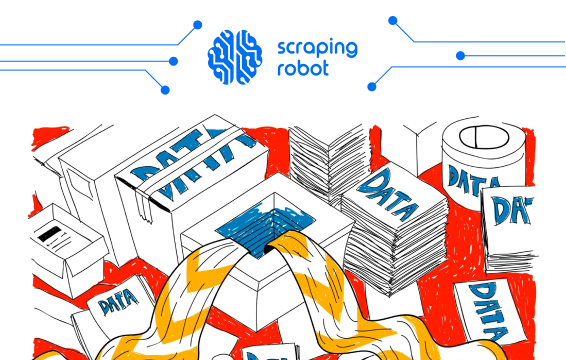Hard Data Vs Soft Data: Differences And Similarities

Data has become so crucial to our daily lives, almost as much as the food we eat. With the advancements in technology and how the entire world is now linked through the internet, we have developed a pressing need to know. Not just about ourselves, but about the world at large. Information is what makes us know things. Data is what gives us information.
Be you an individual or a business owner, you cannot escape the need to collect data, from yourself, from people around you, from your business, from the competition, and the whole world at large. This brings us to the two broad categorizations of data. Data can be either Hard data or Soft data. There have been several discussions in the past regarding the authenticity and reliability of each category of data. The major difference between the two comes in their method of collection and their application. However, the two are needed to obtain a complete picture of whatever information you are searching for.
In this article, we’ll look at both categories of data, the differences between them, their methods of collection, and their application. We’ll also take a look at web scraping as a means of obtaining data in the research context. Look through the table of contents for easy navigation.
Table of Contents
1. What Is Hard Data vs Soft Data?
2. Methods of Generating Hard vs Soft Data
3.Soft Data vs Hard Data: Merits and Demerits
4. Exploring the Hard Data vs Soft Data Comparison With Web Scraping
What Is Hard Data vs Soft Data?

What is Hard data? Hard data consists of facts gotten from valid and reliable sources. Results from these sources are quantifiable. They usually appear as figures on graphs and tables. In the course of gathering this information, a proper research methodology is followed. It makes the data generated valid and provable. When you collect hard data, you may need to establish trends that you will later analyze to understand correctly.
Soft data, on the other hand, is qualitative and is based on opinions and interpretations. However, this does not render the data invalid. Soft data is quite challenging to quantify in actual figures. Since soft data is mostly made up of assumptions, opinions, and interpretations, it is subject to scrutiny. It is for this reason that soft data is not entirely reliable.
I like to think of the hard data vs soft data debate like a sciences vs art debate. Like we learned in grade school, science follows a methodology. It has a formula. When you add 2 and 2, you always get 4. When you add a base to an acid, you get salt and water—every time. Art, on the other hand, is not so defined. There are no cut and dried rules or methods. Two people might draw different pictures of the same building, and both of them will be right. The same thing applies to hard data vs soft data. Hard data is collected from hard facts and using proven methods. Soft data involves opinions, feelings, and point-of-view observations. Neither is bad or wrong, they just work better for different purposes.
Methods of Generating Hard vs Soft Data

Hard Data
Hard data is always factual, and it is derived from physical methodological research. The first step to generating useful hard data is gathering a set of respondents. The respondents are usually large. The reason is that the sample size needs to capture all categories in the target population. The next thing is to choose a preferred method of collecting the data. There are several methods that you can explore:
- Telephone calls
- Polls
- Face-to-face Interview
- Experiments
- Surveys
- Controlled observations
Most times, the research objectives are a significant determinant of the method used to gather data. For example, participants of an experiment in a controlled environment will act differently from when they are in a natural habitat. The results from both settings will be different.
There are times when you may require more than one method to generate hard data. It only helps to emphasize its reliability.
Soft Data
Soft data is qualitative. It is usually descriptive and doesn’t follow the standard research process that hard data requires most of the time. There is no way it can be structured into pictorial form. Perceptions, expectations, ideas, impressions, assumptions, and rumours are examples of soft data. They are usually drawn from discussions and observations. Going by the examples, soft data tends to have ‘holes’ in it, but that does not make it entirely useless. Most times, marketers can use soft data to back up hard data in business discussions.
You can collect soft data with the following methods:
- Case studies: This method of data collection employs an in-depth analysis of past events, occurrences or processes to extract relevant data. It is a versatile method that you can use for both simple and complex subjects.
- Observations: The researcher most times gets absorbed into the setting where the research subjects are. Most times, the respondents are not usually aware of the researcher’s presence. Notes are taken, which will later be used as insights.
- Focus groups: Groups of 6-10 are put together with a moderator to moderate the discussion in a focus group. This type of method seeks to gain more knowledge about a particular subject. Members of focus groups usually have one thing in common.
- One-on-one interviews: This method is also used to source hard data. The only difference between them is the formality and nature of questions asked from the respondent. For soft data, the interview is usually conversational and informal. It is typically the flow of the conversation that dictates the type of questions to be asked. This method is generally full of open-ended questions that can lead anywhere. The reason for this is the personal approach involved here.
Soft Data vs Hard Data: Merits and Demerits

Both data categories have their merits and demerits, both in the method of collection and how they are applied. Generally, hard data tends to be more useful for statistical analysis, while soft data is more beneficial for contextual analysis. However, let’s take a look at the specific merits and demerits of both types of data.
How to use hard data
Hard data is easy to analyze due to its statistical form. There is little or no room for bias with hard data. The result of the research is not subject to anyone’s reasoning. Only facts are dealt with while researching. A well-represented sample population makes it easy to generalize the results of the research. Hard data can be easily generalized to a large group.
Demerits of hard data:
- Hard data can only provide answers relating to real results as in who, when, and what questions. Hard data can’t offer answers to the reasons behind its results.
- The generation of reliable hard data rests on the representativeness of the sample size. In a case where you can’t gather a representative sample, you will need to build an appropriate size. It is time-consuming and tedious because you have to ensure your selection represents a larger group well.
How to use soft data
Soft data proves to be relevant for a very long time. The reason for this is the open-ended nature of the questions used to gather the data. It allows the information collected to be valuable for future research. The personal nature of generating soft data makes it useful for business. Soft data helps marketers interact with customers and understand what they need. Soft data give researchers an in-depth analysis of the subject matter. This merit can also be attributed to the open-ended questions involved. The dimension of information delivered is not constrained by any guideline.
Demerits of soft data:
- Soft data can’t be generalized easily. The sample size involved is mostly personal and not representative enough.
- The process of gathering soft data takes a lot of time.
- The quality of data mainly generated depends on the researcher’s skill. Focus group discussions and one-on-one interviews will only be successful if the researcher possesses the skill and experience.
Exploring the Hard Data vs Soft Data Comparison With Web Scraping

The primary difference between soft and hard data comes from the wide variation in how they are collected. There is a need to differentiate between the two categories of data to clarify which one comes from where. However, with the automated data collection solutions available on the internet nowadays, the distinction of hard data vs soft data is getting blurrier every day. These data collection methods offer across-the-board data collection without distinguishing much between categories of data. One of such automated data collection solutions is web scraping.
Web scraping allows you to use automated bots to crawl through the source code of given webpages and extract data according to preset parameters. The bots break the webpage down into basic HTML code and then extract data from within the code. The extracted data is downloaded into a CSV file or something similar for easy use.
Web scraping allows you to do three things:
- collect data in large volumes
- collect random and disorganized data into a structured form and,
- collect data in real-time and from any website on the internet
With web scraping, you can take your business, academic or personal research to the next level by merging your data collection processes for both data categories. This allows you to get data that offers you the complete picture rather than just one side of the story.
Take, for example; you are researching the movement of the stock market for the past three months to try to predict for the next three months. You can scrape data from a platform like Yahoo! Finance for hard statistics on how the market moved in that time frame. At the same time, you can also scrape press reports and blog commentaries for expert opinions on why the market moved the way it moved.
By combining these two data streams, you can easily make a reasonably accurate prediction about the future market movement. This is a practical example of how web scraping can help you centralize your data-gathering efforts and combine soft and hard data collection for better insights.
To get started with exploring the depths of the hard data vs soft data comparison using web scraping, you can make use of a service like Scraping Robot. At Scraping Robot, we have developed an advanced web scraping software that simplifies the process of data collection to the most basic level. You click a button and you get your data. It doesn’t get simpler than that. Using API technology and multiple proxies, our scraping software allows you to collect data from multiple websites simultaneously and in real-time. This is especially useful if you are researching something like the stock market where a minute change could be very significant.
To get started using our scraping software for your foray into hard data vs soft data comparison, just send a message to our developers detailing your data needs. We will then build a custom scraping solution tailored to meet your exact needs. We also have some prebuilt scraping modules if you’d like to try your hand at some DIY scraping. You get 5000 free scrapes when you sign up for any of our scraping modules.
Conclusion

Hard data and soft data are essential to research, most especially when they are used together. The hard data vs soft data has generated a lot of conversation, but in the end, they are both essential to any good data strategy. Hard data provides facts, while soft data provides context to participant’s responses. Pairing up open-ended and close-ended questions helps you to get the best out of the research. No matter the motive behind the study, information is always valuable.
The information contained within this article, including information posted by official staff, guest-submitted material, message board postings, or other third-party material is presented solely for the purposes of education and furtherance of the knowledge of the reader. All trademarks used in this publication are hereby acknowledged as the property of their respective owners.
